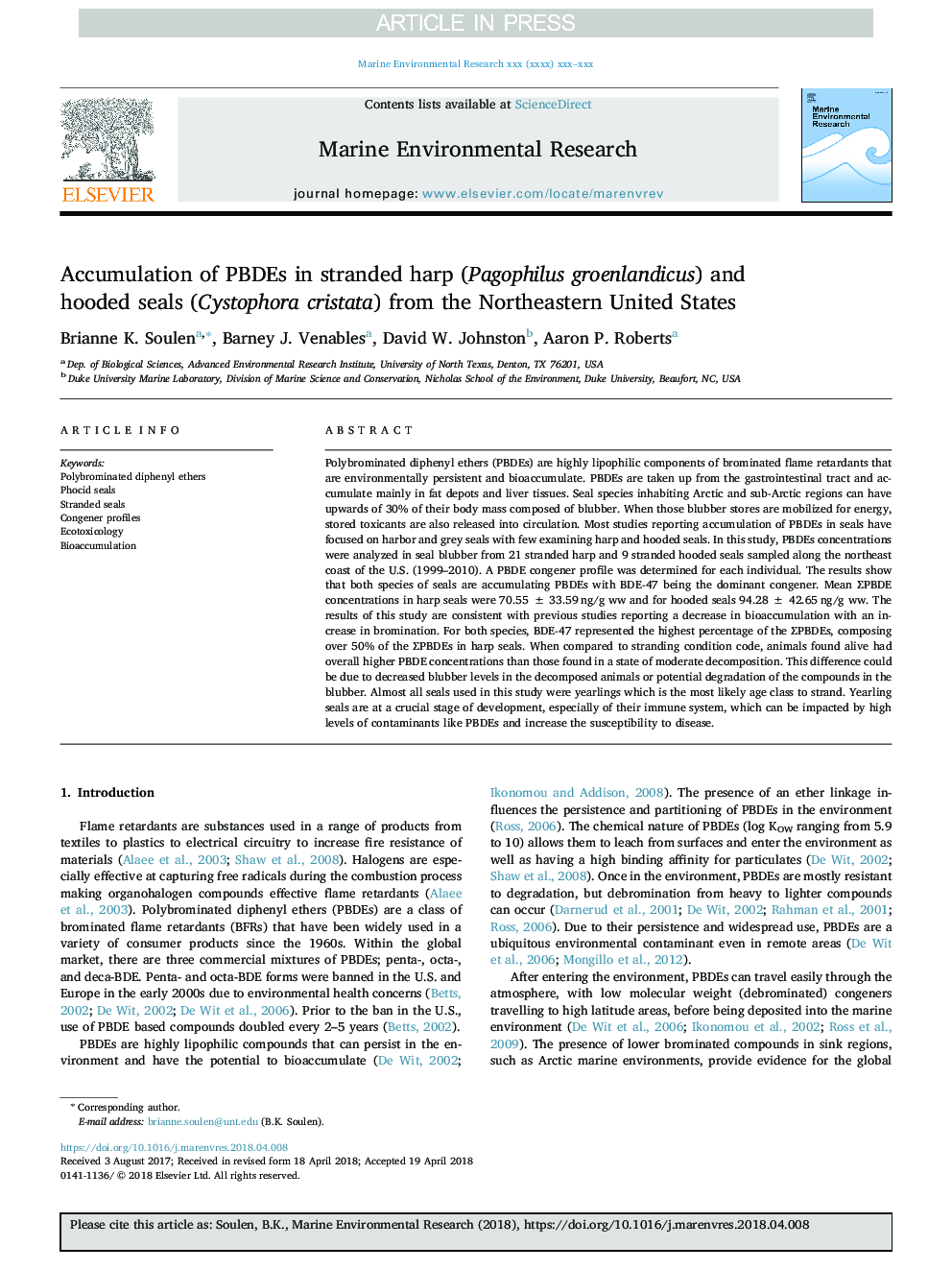| کد مقاله | کد نشریه | سال انتشار | مقاله انگلیسی | نسخه تمام متن |
|---|---|---|---|---|
| 8886279 | 1627545 | 2018 | 6 صفحه PDF | دانلود رایگان |
عنوان انگلیسی مقاله ISI
Accumulation of PBDEs in stranded harp (Pagophilus groenlandicus) and hooded seals (Cystophora cristata) from the Northeastern United States
دانلود مقاله + سفارش ترجمه
دانلود مقاله ISI انگلیسی
رایگان برای ایرانیان
کلمات کلیدی
موضوعات مرتبط
مهندسی و علوم پایه
علوم زمین و سیارات
اقیانوس شناسی
پیش نمایش صفحه اول مقاله

چکیده انگلیسی
Polybrominated diphenyl ethers (PBDEs) are highly lipophilic components of brominated flame retardants that are environmentally persistent and bioaccumulate. PBDEs are taken up from the gastrointestinal tract and accumulate mainly in fat depots and liver tissues. Seal species inhabiting Arctic and sub-Arctic regions can have upwards of 30% of their body mass composed of blubber. When those blubber stores are mobilized for energy, stored toxicants are also released into circulation. Most studies reporting accumulation of PBDEs in seals have focused on harbor and grey seals with few examining harp and hooded seals. In this study, PBDEs concentrations were analyzed in seal blubber from 21 stranded harp and 9 stranded hooded seals sampled along the northeast coast of the U.S. (1999-2010). A PBDE congener profile was determined for each individual. The results show that both species of seals are accumulating PBDEs with BDE-47 being the dominant congener. Mean Æ©PBDE concentrations in harp seals were 70.55â¯Â±â¯33.59â¯ng/g ww and for hooded seals 94.28â¯Â±â¯42.65â¯ng/g ww. The results of this study are consistent with previous studies reporting a decrease in bioaccumulation with an increase in bromination. For both species, BDE-47 represented the highest percentage of the Æ©PBDEs, composing over 50% of the Æ©PBDEs in harp seals. When compared to stranding condition code, animals found alive had overall higher PBDE concentrations than those found in a state of moderate decomposition. This difference could be due to decreased blubber levels in the decomposed animals or potential degradation of the compounds in the blubber. Almost all seals used in this study were yearlings which is the most likely age class to strand. Yearling seals are at a crucial stage of development, especially of their immune system, which can be impacted by high levels of contaminants like PBDEs and increase the susceptibility to disease.
ناشر
Database: Elsevier - ScienceDirect (ساینس دایرکت)
Journal: Marine Environmental Research - Volume 138, July 2018, Pages 96-101
Journal: Marine Environmental Research - Volume 138, July 2018, Pages 96-101
نویسندگان
Brianne K. Soulen, Barney J. Venables, David W. Johnston, Aaron P. Roberts,